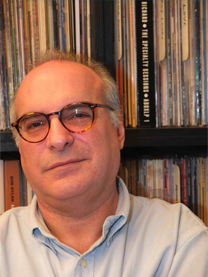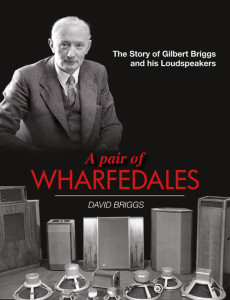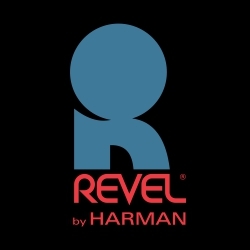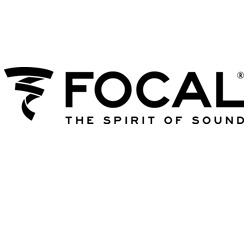While writing the story of KEF, Dr Andrew Watson and I were contacted by Prof. David Briggs. He told us that he was working on a history of Wharfedale. His name was not coincidental: Wharfedale’s founder, Gilbert Briggs, is a relative of David’s, and stories about ‘Cousin Gilbert’ were enough to punctuate his childhood with curiosity about one of the founding fathers of British hi-fi.
David reached us via Raymond Cooke’s widow, Jennie Goossens Cooke, in one of those coincidences that ends up enriching books that might otherwise have missed crucial information. It was just such a coincidence that led me via Tim de Paravicini to those who built the McIntosh-based sound system used at Woodstock. Jennie mentioned the KEF project to David, when he called her about a photo credit for his book. His reason for contacting us involved his researching the background on Raymond Cooke leaving Wharfedale and founding KEF.
Both Andrew and I were curious to find out how David’s book would mesh with ours. Now it’s here, and I am overjoyed to find that the two form a natural pairing. They overlap as needed, with a connection as strong and direct as a book on early Alfa Romeo followed by a history of Ferrari. The two together describe consecutive ‘episodes’ in the history of audio, and I am overjoyed to see another manufacturer’s name added to the hi-fi bookshelf.
A Pair of Wharfedales: The Story of Gilbert Briggs and His Loudspeakers, though, is as much a biography of Briggs as it is a straight history of Wharfedale. Briggs ran Wharfedale from its founding in 1932/3 until his retirement in 1964; the book ends in 1978 with Briggs’ death. While completists might feel that the past 34 years have been neglected, it’s arguable that the company’s first 46 years were the most important – the time when Wharfedale was one of the most biggest names in hi-fi.
If this remark makes me an anorak*, so be it: once I opened the cover, I couldn’t put it down. Most fascinating for me, sating the hunger I still have for the history of audio, is reading about a brand that flourished in the 1950s, well before my involvement in hi-fi began. Many of the names rang bells, like a young Stanley Kelly, Messrs John Borwick and Donald Aldous and Ralph West, but I was intrigued by other hi-fi notables I knew only through Gilbert Briggs’ Audio Biographies. The detailed coverage of that tome is one of the elements that make this book such a rewarding experience for me.
As a history of a brand, this is nigh on perfect. (OK, there are a few typos, but I’m guilty of that, too.) I can only marvel at the scholarship, for it involved a number of individuals who are long-deceased. Dr Watson and I had the benefit of being able to interview so many who were there at the birth of KEF that I almost feel guilty when I consider what David Briggs had to undertake. And while I was gripped by most of the tale, three segments had me turning pages as if reading a mystery, two of which which related the KEF saga.
Of prime importance, and as a section complementary to the KEF book, is the detailed information about Raymond Cooke’s years at Wharfedale, and his relationship with Gilbert Briggs. Our coverage of this period in the KEF history served only to set up his departure to form KEF. I would suggest that any serious scholars of hi-fi read David’s book first, as the best was to approach and understand the KEF history with a view of what drove Cooke to leave Wharfedale to manufacture his own speakers. David’s study, of course, provides Gilbert Briggs’ viewpoint of the split.
Another section which dazzled me is the comprehensive study of the 21 books published by Briggs, with dust wrapper art, especially as Audio Biographies is my totem, my bible. Here is the full story of that priceless volume (although ego leads me to wish that the author had pointed out where one can find the sole, surviving fragment of Cooke’s deleted entry: in our KEF history).
Lastly, I was staggered by the accounts of Briggs’ live-vs-recorded demonstrations. Most telling of the difference between ‘then and now’ are images of the Royal Festival Hall packed with people attending a hi-fi presentation! Now, one would be hard-pressed to attract the same number to a three-day hi-fi show in Manhattan.
David tells the story chronologically, supported by amazing illustrations – the author was blessed with access to phenomenally rare documents and superb period photos. He also provides a short section dealing with Wharfedale post-1978, while the appendices include a checklist of the company’s products for the period covered by the book, complete with prices.
No hi-fi fanatic whose interests include knowledge of the past will be able to resist this. Dig into your pocket for £30 and log on to www.impublications.com/shop/a-pair-of-wharfedales.html. Just buy it. This book is a magnificent. And one helluva way to mark Wharfedale’s 80th Anniversary.
*UK-speak for a total geek.
(Australian Hi-Fi, 2012)























